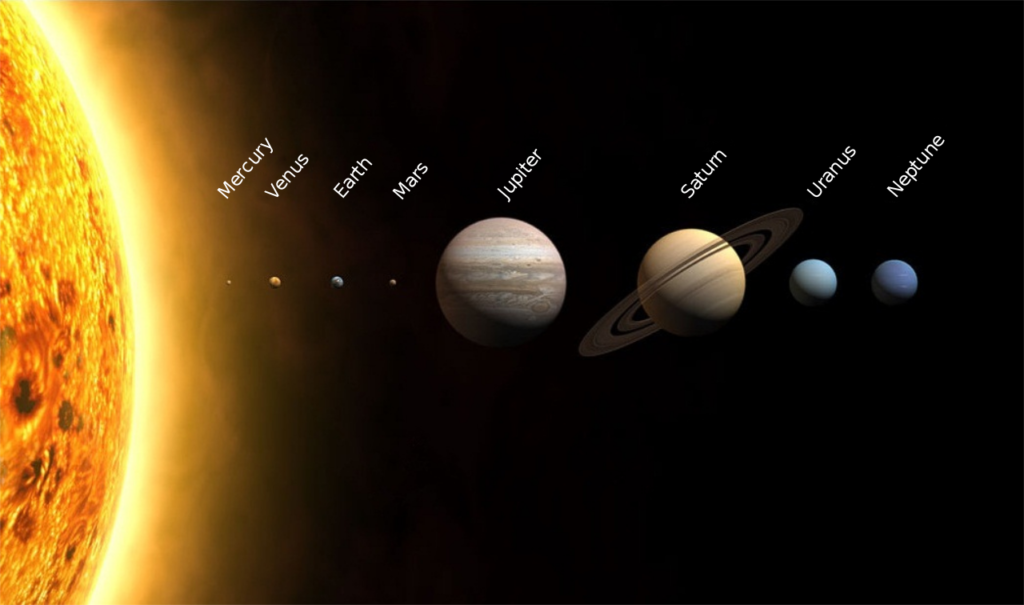1. Answer the following questions briefly.
(a) How does a planet differ from a star?
Ans. Stars have their own heat and light, and planets do not. There are countless stars but we have only eight plants.
(b) What is meant by the ‘Solar System’?
Ans. The sun, eight planets, satellites and some other celestial bodies known as asteroids and meteoroids together form the solar system. Since sun is in the middle, therefore we call sun as the head of the solar family.
(c) Name all the planets according to their distance from the sun.
Ans. There are eight planets in our solar system. In order of their distance from the sun, they are: Mercury, Venus, Earth, Mars, Jupiter, Saturn, Uranus and Neptune.
(d) Why is the Earth called a unique planet?
Ans. Conditions favorable to support life are found only on the earth. The earth is neither too hot nor too cold. It has water and air, which are very essential for our survival. The air has life-supporting gases like oxygen. Because of these reasons, the earth is a unique planet in the solar system.
(e) Why do we see only one side of the moon always?
Ans. The moon moves around the earth in about 27 days. It takes exactly the same time to complete one spin. As a result, only one side of the moon is visible to us on the earth.
(f) What is the Universe?
Ans. Millions of galaxies together form a Universe. It is difficult to imagine how big the universe because it is still expanding.
2. Tick the correct answer.
(a) The planet known as the “Earth’s Twin” is
(i) Jupiter (ii) Saturn (iii) Venus
(b) Which is the third nearest planet to the sun ?
(i) Venus (ii) Earth (iii) Mercury
(c) All the planets move around the sun in a
(i) Circular path (ii) Rectangular path (iii) Elongated path
(d) The Pole Star indicates the direction to the
(i) South (ii) North (iii) East
(e) Asteroids are found between the orbits of
(i) Saturn and Jupiter (ii) Mars and Jupiter (iii) The Earth and Mars
3. Fill in the blanks.
(a) A group of ________ forming various patterns is called a ________.
Stars, constellation
(b) A huge system of stars is called________.
galaxy
(c) ________is the closest celestial body to our earth.
The moon
(d) ________is the third nearest planet to the sun.
Earth
(e) Planets do not have their own________ and ___________________.
Heat, light
